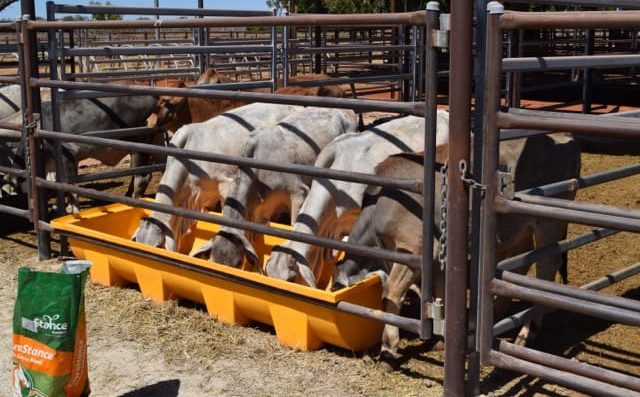
Brahman steers used as part of the feeding trial. Image: Dennis Poppi
Editor’s note: Charts now added to this story as requested by a reader
A DESKTOP study into gross margins has indicated breakeven targets for supplementary feeding of cottonseed to weaners and heifers in the Northern Territory.
Growing access to energy and protein-rich commodities like cotton seed is being seen in the Northern Territory, as the local cotton industry takes root.
Supplementing weaners for 180 days to achieve an extra 0.3kg/day liveweight gain after first-round weaning in the dry season saw a breakeven threshold of $678/t of supplement when steer prices were 350c/kg liveweight, the study suggested.
 Concentrated supplementation of heifers for 48 days at the end of the second dry season after weaning, aiming for 0.8kg average daily gain, had a break-even threshold of $696/t at the same price structure.
Concentrated supplementation of heifers for 48 days at the end of the second dry season after weaning, aiming for 0.8kg average daily gain, had a break-even threshold of $696/t at the same price structure.
The analysis was based on feeding protein meals (cottonseed meal, copra meal, palm kernel meal, whole cotton seed) to a model cattle-breeding herd in the Victoria River district and Katherine regions.
The 9507 adult-equivalent cattle included steers fed to between 280kg and 350kg liveweight for the Darwin live export market. The average weight of the replacement heifers at the end of the wet season was 424kg.

Geoff Niethe
The study was led by Harrisville-based consultant Dr Geoff Niethe.
“Applying this sensitivity analysis using a whole-herd model demonstrated the thresholds at which supplementation is likely to be profitable,” Dr Niethe said.
“If the steer price is 300c/kg LW, you can’t afford to pay any more than $600/t for your supplement and conversely, if you have to pay $1000/t for your supplement, you need to be selling steers at more than 450c/kg.” (see table, below).
Feeding at those rates had the potential to lift gross margins at a whole-of-herd level, depending on cattle prices and cost of supplements, according to the sensitivity analysis.
“In terms of productivity and profitability, there is a need to understand the optimum supplementary feeding regimes for weaners and replacement females in the seasonally dry rangelands of northern Australia,” Dr Niethe said.
“Increasing cow reproduction rates and annual liveweight gain present the best opportunity for maximising profitability of cattle herds in these regions,” he said.
“At recent steer prices and supplement costs, feeding all weaners in the first dry season after weaning, or just the heifer cohort for a short duration in the second dry season after weaning has the potential to increase gross margins across the entire cattle herd and altered herd structure.”
The team included researchers from CQ University’s Institute for Future Farming Systems at Rockhampton and the University of Queensland, Gatton as well as the NT Government’s Berrimah Farm, Darwin and NSW consultants Holmes & Co.
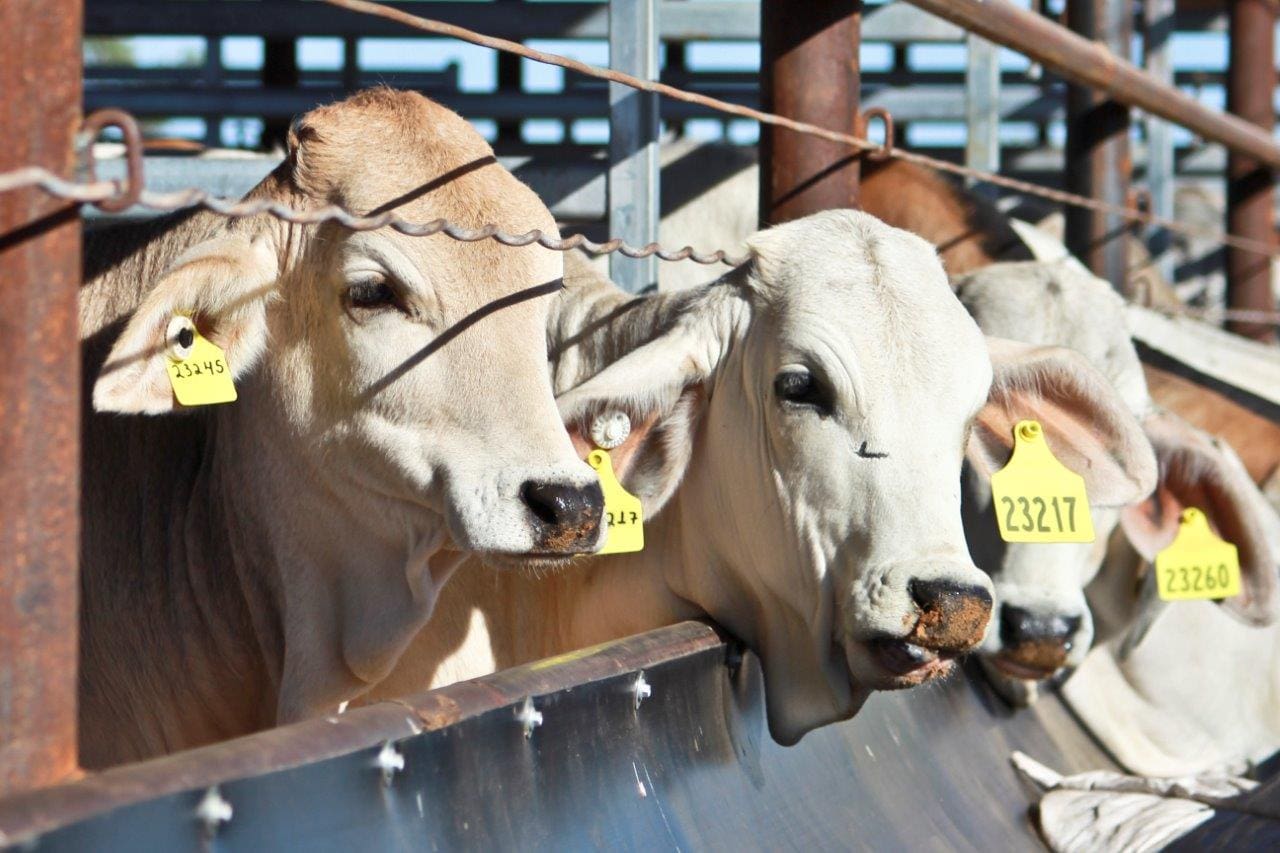
Brahman steers used in pen trials. Image – Dennis Poppi
The study was based primarily on pen trials at Katherine conducted by researchers Dennis Poppi and Tiago da Silva, along with colleagues from the NT Department of Primary Industry and Fisheries and the University of Queensland.
Their research demonstrated that full compensatory gain did not occur over the wet season and that supplemented weaners retained a significant weight advantage over their non-supplemented counterparts.
Consequences two-fold
Dr Niethe said the consequences of this finding were two-fold. Firstly, more steers were able to be turned off after the first wet season and, more importantly, a greater proportion of heifers were able to reach their critical mating weight when first joined.
“Achieving reasonable re-conception rates in first-calf cows is a massive challenge everywhere, and even more so in northern Australia,” he said.
“Supplementation of weaners provided an opportune window to tighten up the mating period by ensuring maiden heifers were at their critical mating weight and able to conceive at the right time; a heifer calving too late in the wet season has reduced lifetime productivity.”
“Coupling these findings with herd-management and feed-base strategies, along with target heifer reproduction, steer liveweight and herd structure could help to increase whole-of-herd productivity,” he said.
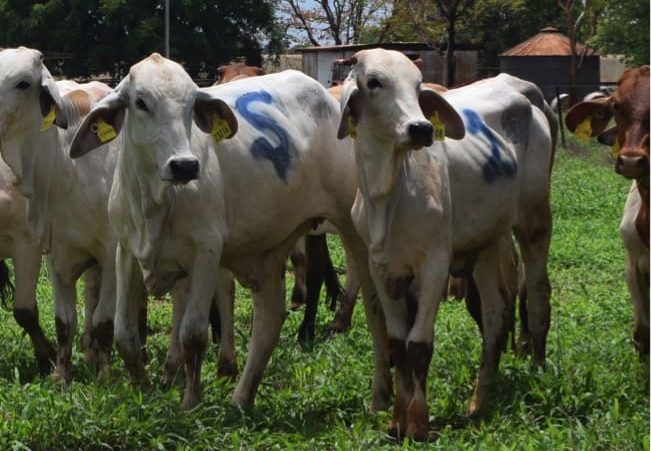
Heifers used in pen trials. Image: Dennis Poppi
The results provided evidence and a framework for decision-making to assess the potential financial benefits associated with weaner and yearling heifer supplementation in the region.
“The approach and results will assist producers to make tactical or strategic decisions on the adoption of weaner supplementation and the development of novel feeding systems in cattle breeding herds in the region, within prevailing economic conditions,” Dr Niethe said.
“Moreover, they have provided target supplement costs by which to identify potential new supplements or feeding scenarios,” he said.
Other members of the research team were Simon Quigley, Philip Holmes, Matthew Callaghan, Tim Schatz, Stuart McLennan and Dennis Poppi.
Growing NT supply of whole cottonseed
As the far northern cotton industry continues to expand, Northern Territory cattle producers are increasingly turning to high-energy and high protein cottonseed as a feed supplement, according to nutrition consultant Geoffrey Niethe.
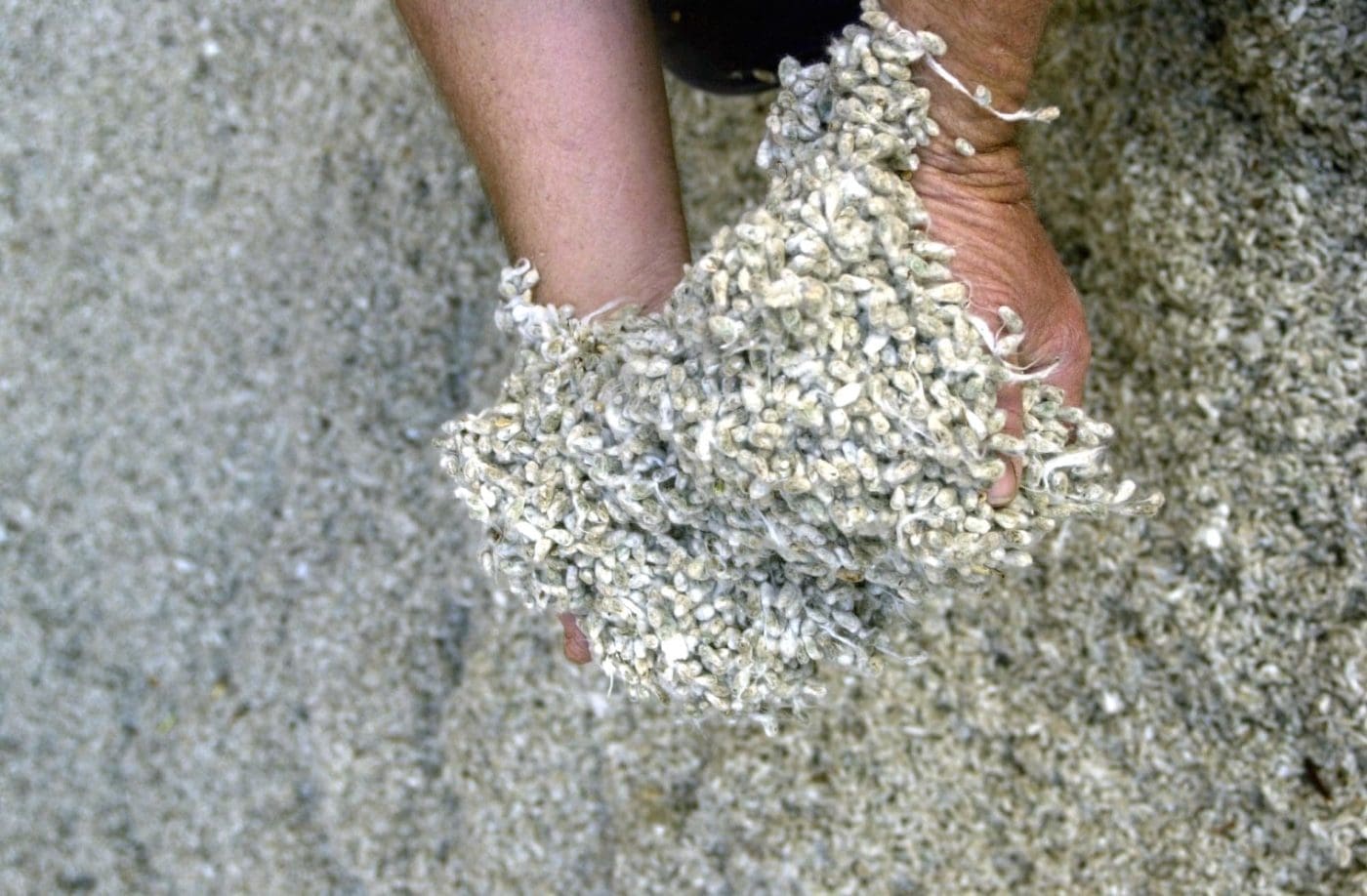 “Whole cottonseed is really God’s gift to cattle feeding, if you can get it at the right price,” he said. “It can be fed in open troughs or even old tractor tyres and there’s no need to worry about acidosis or being spoiled by rain, although it must be kept dry during long-term storage.
“Whole cottonseed is really God’s gift to cattle feeding, if you can get it at the right price,” he said. “It can be fed in open troughs or even old tractor tyres and there’s no need to worry about acidosis or being spoiled by rain, although it must be kept dry during long-term storage.
“When I went through vet school we were advised that it was toxic to cattle because it contained gossypol, which is toxic to monogastrics (pigs, chickens) and young calves. However, when I went to Goondiwindi, slap-bang in the middle of Queensland’s cotton growing regions, I soon found that it was widely fed during dry times – perhaps the newer varieties grown in Australia now contain lower concentrations of gossypol.”
Dr Niethe’s work experiences include consulting in a feedlot in western Türkiye where the ration included up to 14pc cotton seed.
“Because cotton seed is high in fat, it slows down the rumen, so in a feedlot situation, we were limited by the amount we could get into the cattle as the total fat content of the ration was capped at 6pc. In an ad lib grazing situation, if intake is too high, cattle stop eating it for a day or two and then come back onto it – self regulation if you like,” he said.
He said cotton seed did have some disadvantages. “It won’t run through an auger and it is not well-suited to grain bins if the content in the ration is high.
“Also, producers should request a Commodity Vendor Declaration (CVD) each time they purchase it. This gives a record for any relevant withholding periods and export slaughter intervals.
“The other problem is that the secret is out and now the price has risen. Gone are the days when you could get it for $200/tonne.”
He also recalled a problem when a client fed cracked grain and cottonseed meal to weaners. “Grain is high in phosphorus and low in calcium and five of the weaners suffered broken backs and fractured ribs. I am not sure what contribution the cottonseed meal made but I suspect the gossypol bound with the calcium further exacerbating the calcium inadequacy. The remedy is simple – just make sure you add ground limestone or calcium supplement to the ration.”
Requested charts:
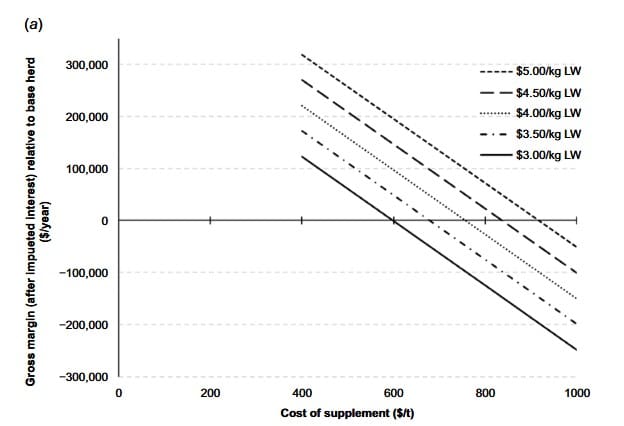
Supplementing weaners for 180 days to achieve an extra 0.3 kg/day liveweight gain after 1st round weaning in the dry season saw a break-even threshold of AU$678/t of supplement when steer prices were $3.50/kg liveweight. A concentrated supplementation period of heifers for 48 days at the end of the second dry season after weaning to achieve 0.8 kg/day had a break-even threshold of $696/t at the same price structure.

Inputs used and gross margins (GM) after implementing protein supplementation of weaners during the first dry season (Option 1) and feeding of yearling heifers during the second dry season (Option 2) after weaning at four different supplement costs (including freight) and a steer price of $3.50 kg/liveweight (live export from Darwin to Indonesia). AE = adult equivalents.

Supplementation of weaners provided an opportune window to tighten up the mating period by ensuring maiden heifers were at their critical mating weight (CMW).

Hi Sue Webster, the sensitivity analysis table Geoff refers to in his report wasn’t included in this story. Could you please upload it? Diet quality from pasture, which is the lion’s share of total dry matter intake, animal weight and physiological stage and body condition score, also need to be considered. Whole cottonseed has been used for many years in Queensland for drought feeding breeders, and spike feeding heifers, with remarkable results. Like urea, whole cottonseed has saved far more cattle and sheep than it has killed. Most problems occur when there is minimal pasture available and thus lack of fibre for the rumen, livestock are hungry and gorge supplements, and animals are not eased onto supplements to allow the rumen to adjust to the change in the feed without producing deleterious effects. The widespread availability of cottonseed in the NT and Kimberley regions would be a godsend.
Thanks for your comment, Desiree. We’re chasing down the table and will add it to this article. Editor